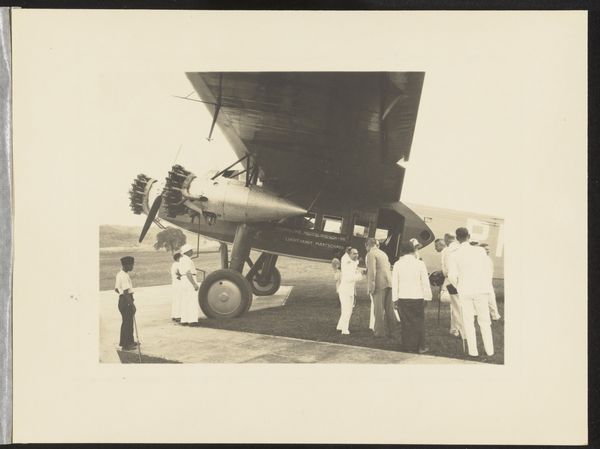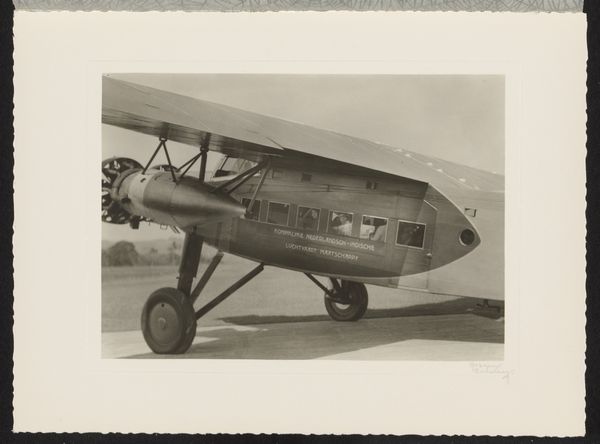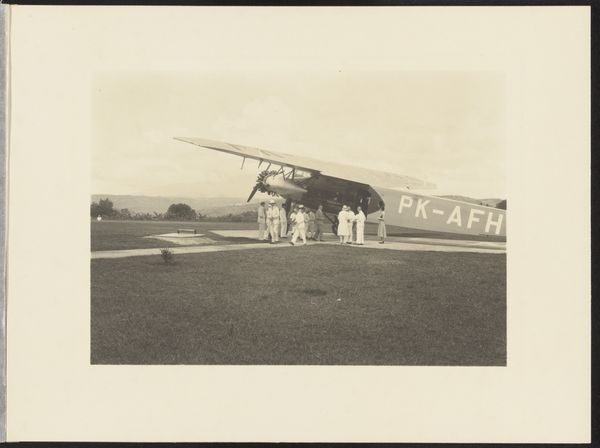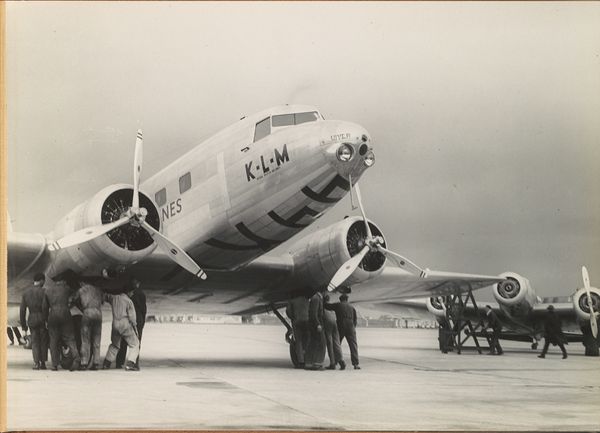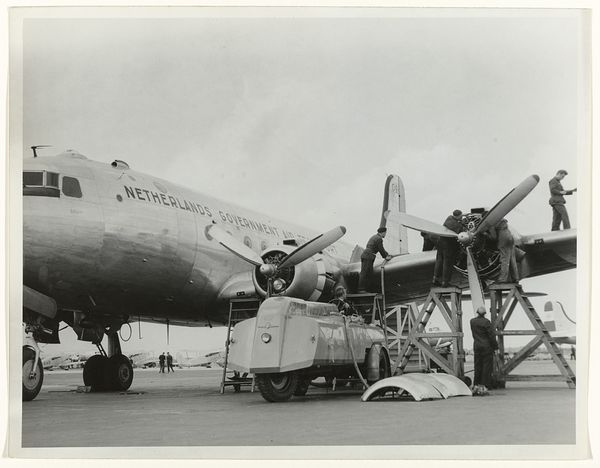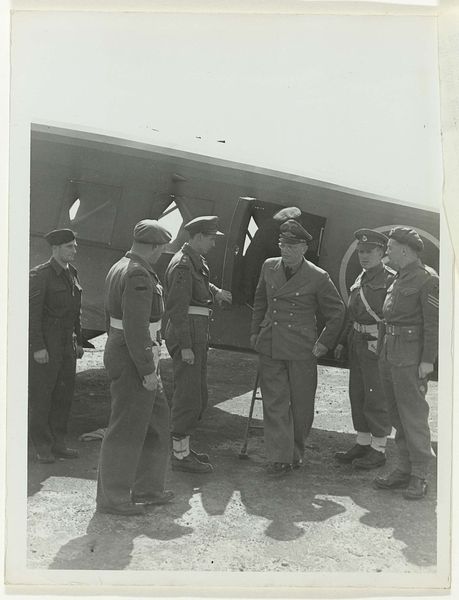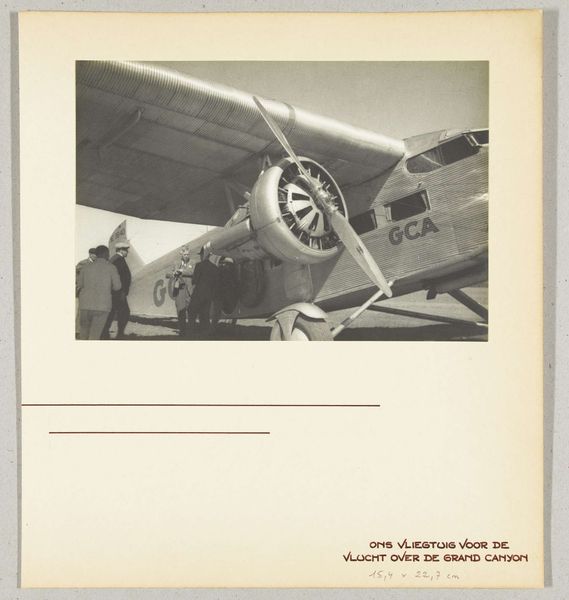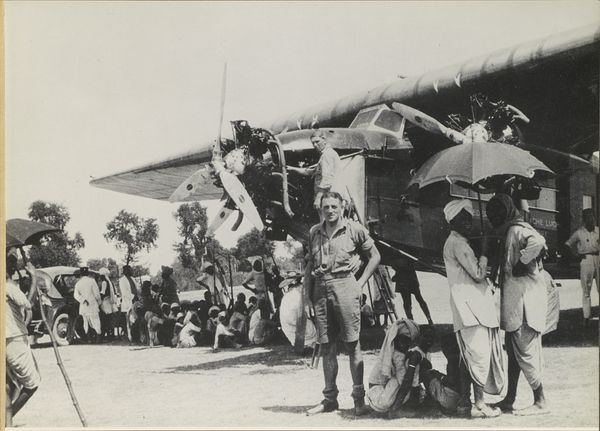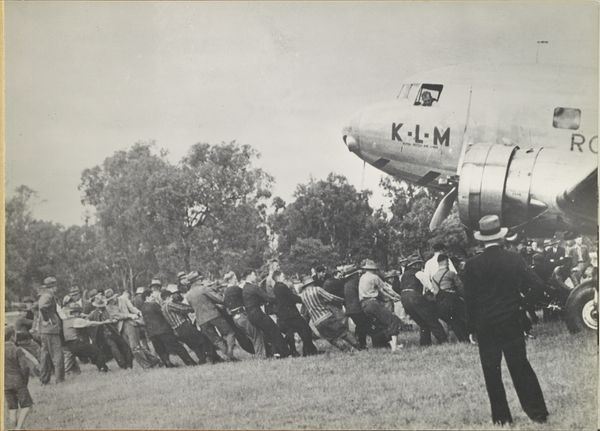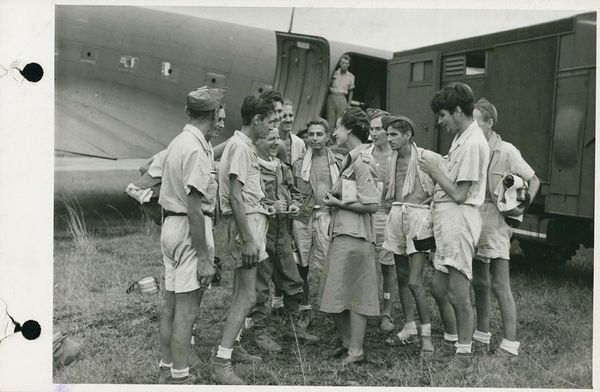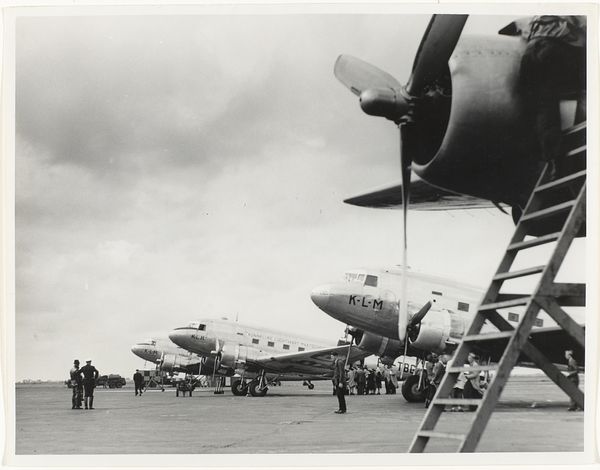
Vertrek van de delegatie van gouverneur A.H. Neijs na het bezoek aan de leprozerie Pelantoengan 1931 - 1935
0:00
0:00
print, photography, gelatin-silver-print
#
portrait
#
print photography
# print
#
landscape
#
photography
#
orientalism
#
gelatin-silver-print
Dimensions: height 117 mm, width 165 mm
Copyright: Rijks Museum: Open Domain
Curator: Here we have a gelatin-silver print by Otto Hisgen, dating from 1931 to 1935, titled "Departure of the Delegation of Governor A.H. Neijs after the Visit to the Pelantoengan Leper Colony." Editor: It's a striking image—somber, almost. Despite what I imagine would be considered groundbreaking technology, the whole scene has a feeling of quiet weight. The starkness of the plane against what seems like tropical landscape amplifies this contrast. Curator: Yes, I find that tension powerful as well. The airplane functions as a symbol of Western progress intersecting with a particular colonial reality. The composition, with its somewhat obscured figures and focus on the departing delegation, prompts reflections on hierarchy and power dynamics. The figures dressed in all white almost read like angels…or conquerors, given the historical context. Editor: Right. Those white suits against the darker skin tones are definitely part of that visual language of colonialism. You also have the delegation departing *from* a leper colony. This hints at broader themes like the control and isolation of marginalized communities, policies often undergirded by racist science and implemented by colonial powers. Is the delegation there to help or observe from a distance? It's ambiguous. Curator: It’s not just a political record, however; it's also a carefully constructed visual statement. Notice how the wing of the plane bisects the photograph, drawing the eye towards the receding horizon and, perhaps, a promise of the future, while keeping the human element contained in the foreground. This also draws one's attention to the airplane itself. Editor: But is it a *promise* or a threat? Aviation was still relatively new. It carried strong associations with both innovation and military power. What does that mean to the people standing there on the ground? The large "PK" on the airplane is part of that orientalist visual code, which otherizes colonized populations through documentation of what appear to be routine processes of daily life. Curator: That touches upon the fascinating dichotomy of colonial imagery. The image ostensibly documents a commonplace event, but the layers of implied meaning speak to deeper cultural anxieties. The act of documentation itself becomes an exercise of power. Editor: Absolutely. Images like this can be disturbingly neutral. It encourages one to imagine all that goes unsaid: questions of consent, medical ethics of the time, the lasting social impact on marginalized groups who were the subjects of such documentation. It shows how a single, almost mundane photograph can actually tell a much more complex, multi-layered story when understood within its broader sociopolitical context. Curator: It's in examining those complexities that images like this become so evocative, opening dialogue around the past's enduring resonance with the present.
Comments
No comments
Be the first to comment and join the conversation on the ultimate creative platform.
